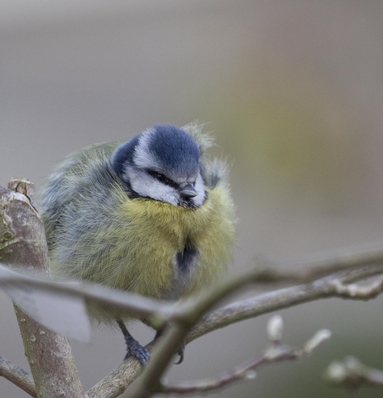Getting through the Winter

How do birds, particularly small birds, get through the winter?
Many species in the northern hemisphere move south and Arran like many places in the UK is an interesting place to watch the seasonal comings and goings of birds, as Arran provides both summer breeding sites and relatively frost free wintering areas. But for the small birds that remain through the winter, how do they improve their chances of survival?
Some try to make sure that the limited food is available when needed. Mistle Thrushes try to defend Holly trees for their own use. Robins have winter territories and will try to see off other Robins. Coal Tits hide seeds for use later in the winter. If these are sunflower seeds and are hidden in a plant pot they can be forgotten and provide an unexpected bloom for the owner.
To get through the long winter nights, some birds go in for communal roosting. A good example of this was the eighteen Wrens regularly squashing into a small nest pocket in a house in Blackwaterfoot. Huddling together reduces the risk of starvation by lowering the energy required to survive the night. There is also a decrease in predation risk and an improved ability to find food.
People have commented that their garden feeders seem to be busiest in the early morning and again in the late afternoon.
Surviving from one day to another requires planning and the late afternoon feed is an attempt to put on enough fat to see the bird through the long winter night. There can be around a ten to fifteen percent drop in body weight over night when this fat is converted into necessary heat. In human terms this is equivalent to putting on a stone in weight each day and burning it off before the morning!
Feathers are great insulators but even with their feathers fluffed up, small birds lose body heat to the surrounding air. And as well as choosing roost sites and "burning off" their fat reserves, a recent study has highlighted another strategy that small birds use to help them survive. They can adjust their body temperature, a sort of nightly less pronounced hibernation called rest-phase hypothermia. The study was done on the familiar Blue Tit (Nord et al, Oecologia 167: 21-25). It showed that birds with a large fat reserve only lowered their body temperature by a small amount overnight while birds with a small fat reserve took their body temperature down significantly lower. The conclusion was that the Blue Tit was able to assess its own reserves and the external conditions in order to control its temperature to try to get through the night.
As you snuggle into your duvet tonight, spare a thought for your feathered friends.